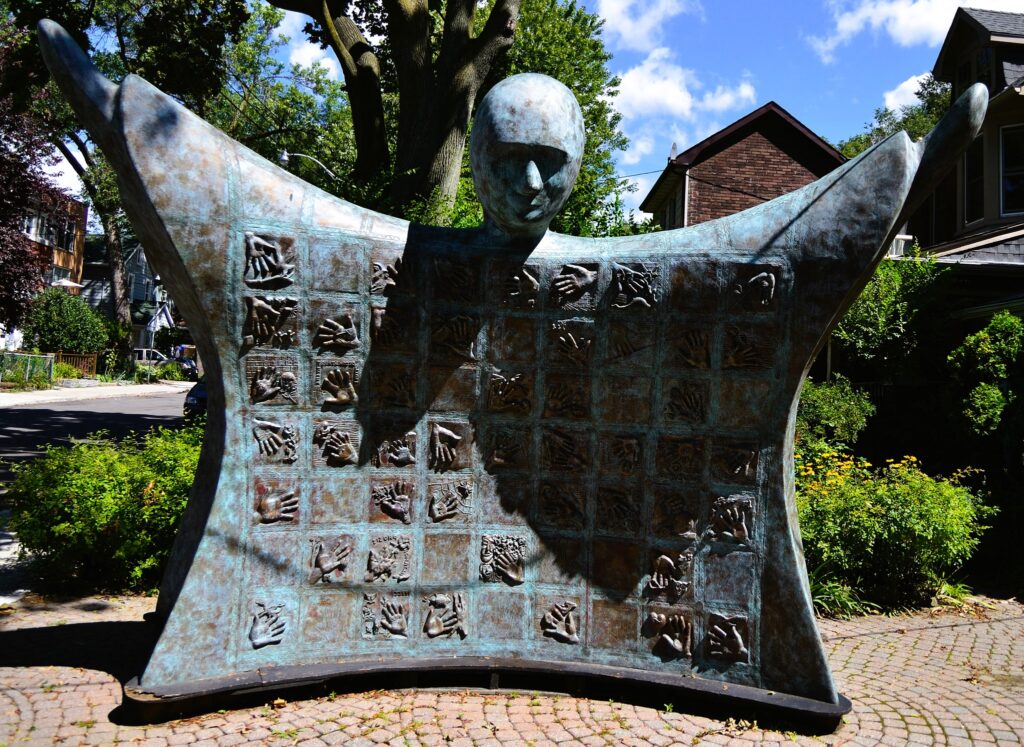Introduction Public art has the power to transform public spaces, enriching the cultural landscape and enhancing the overall quality of life for residents and visitors alike. In Ontario, Canada, the integration of public art into streetscapes has become a vital aspect of urban planning and design. From vibrant murals to large-scale sculptures, these artistic installations breathe life into the city streets, fostering a sense of identity, community, and civic pride. This article explores the significance of public art in Ontario’s streetscapes and highlights the efforts made to promote and support these creative endeavors.
The Impact of Public Art
Public art serves as a visual representation of a community’s values, history, and aspirations. By integrating art into public spaces, Ontario’s streetscapes are transformed into dynamic, interactive environments that engage residents and visitors in unique ways. These artistic interventions have the potential to spark conversations, encourage dialogue, and challenge conventional thinking, making them a powerful tool for social and cultural transformation.
Enhancing Streetscapes through Diversity
Ontario’s streetscapes are incredibly diverse, reflecting the province’s multicultural fabric. Public art plays a crucial role in celebrating this diversity by representing different cultural, ethnic, and historical narratives. Through murals, sculptures, and installations, artists capture the essence of various communities, showcasing their unique traditions and contributions. This celebration of diversity fosters inclusivity and strengthens the social fabric of Ontario, creating spaces that are welcoming and representative of all its residents.
Supporting Local Artists
Ontario’s commitment to public art extends to supporting local artists and fostering their creative development. Various government initiatives, grants, and programs have been established to provide opportunities for artists to showcase their talent and contribute to the streetscapes of the province. For example, the Ontario Arts Council provides funding for public art projects, ensuring that artists have the resources they need to bring their vision to life. These initiatives not only empower local artists but also contribute to the growth and vitality of Ontario’s artistic community.
Engaging the Community
Public art in Ontario’s streetscapes goes beyond mere aesthetics. It serves as a catalyst for community engagement and involvement. Many public art projects involve collaboration between artists, local residents, and community organizations. By involving the community in the creation and selection of public art, a sense of ownership and pride is instilled, fostering a stronger connection between people and their surroundings. This participatory approach ensures that public art reflects the aspirations and values of the community it serves. Creating Inclusive Walkable Spaces: Accessibility Matters.
Case Studies: Notable Public Art Installations in Ontario

Ontario is home to several iconic public art installations that have become beloved landmarks. One such example is the “Toronto Music Garden” in Toronto, designed by cellist Yo-Yo Ma and landscape designer Julie Moir Messervy. This garden combines music and landscape architecture, with each section of the garden representing a different Bach suite. The result is a harmonious blend of nature, music, and art, providing visitors with a unique sensory experience.
For more information on public art and its role in Ontario’s streetscapes, please visit the following sources:
- Wikipedia – Public Art
Another notable public art installation is the “Maman” sculpture by Louise Bourgeois, located outside the Art Gallery of Ontario in Toronto. This larger-than-life bronze sculpture of a spider has become an iconic symbol of the city, attracting visitors from around the world. Its presence not only adds visual interest to the streetscape but also sparks conversations about art and its interpretation.
The Role of Standards and Regulations
To ensure the successful integration of public art into Ontario’s streetscapes, standards and regulations play a crucial role. Organizations such as the Canadian Standards Association (CSA) and the National Research Council (NRC) provide guidelines for the selection, installation, and maintenance of public art installations. These standards ensure that public art is safe, accessible, and durable, allowing it to withstand the test of time and environmental conditions.
Conclusion
Public art has the power to transform Ontario’s streetscapes into vibrant, inclusive, and engaging spaces. By celebrating diversity, supporting local artists, and actively involving the community, public art becomes a catalyst for social, cultural, and economic growth. Through the implementation of standards and regulations, the integration of public art into Ontario’s streetscapes can be done in a way that is safe, accessible, and sustainable. As Ontario continues to evolve, public art will remain a vital component in shaping the identity and enhancing the overall experience of the province’s streetscapes.


